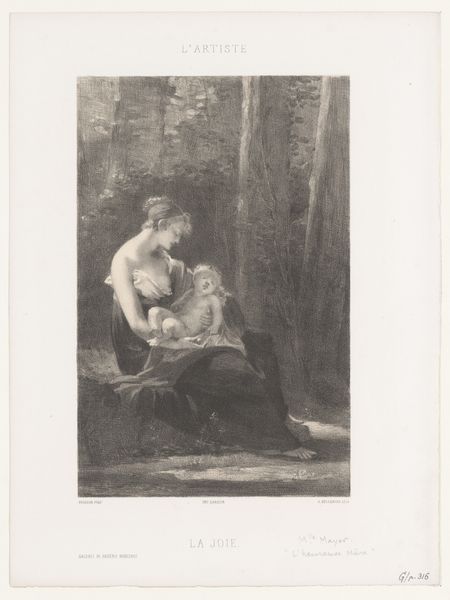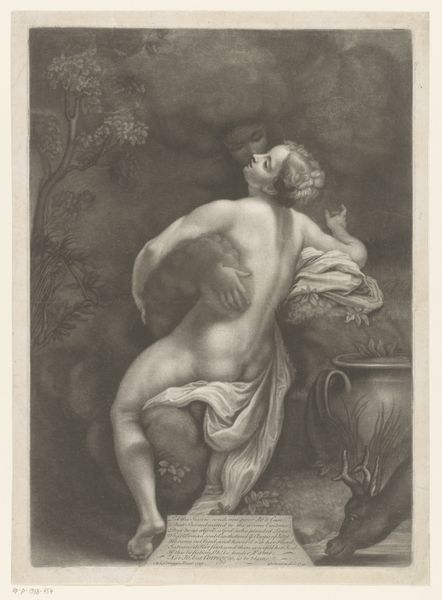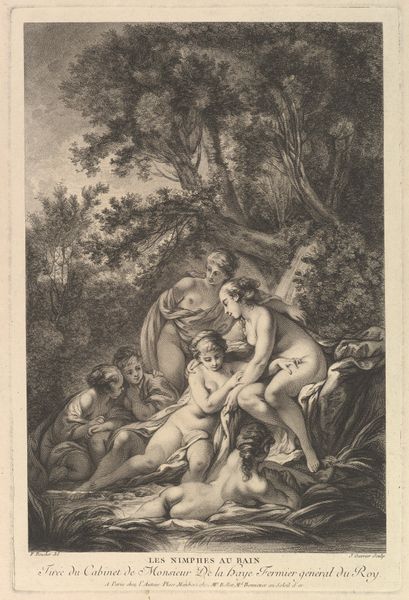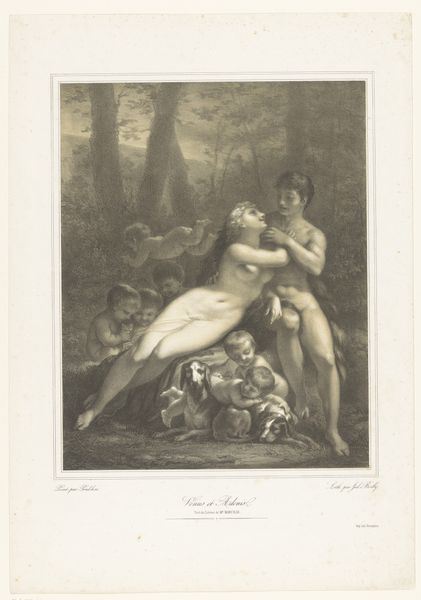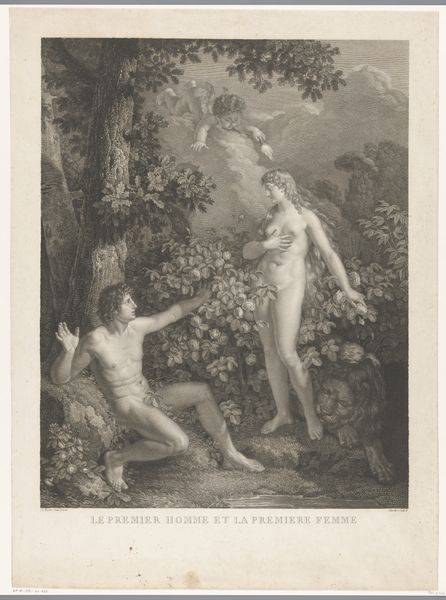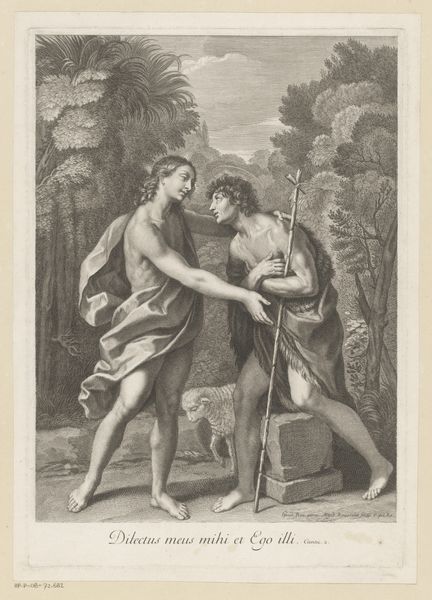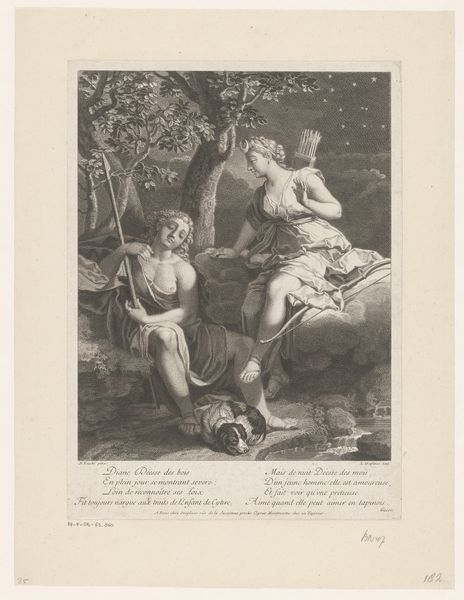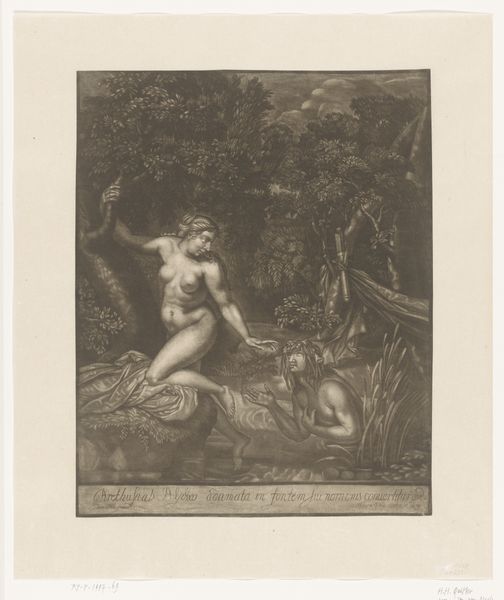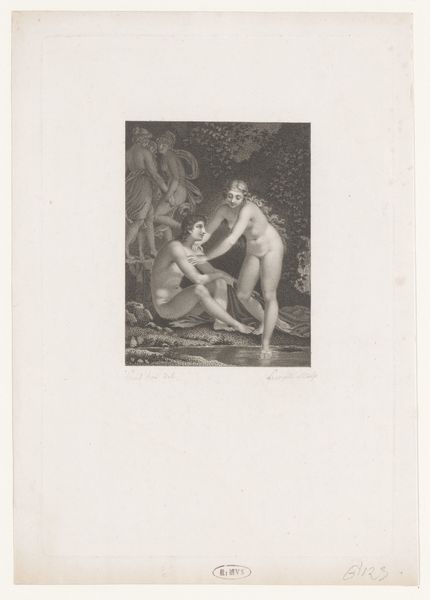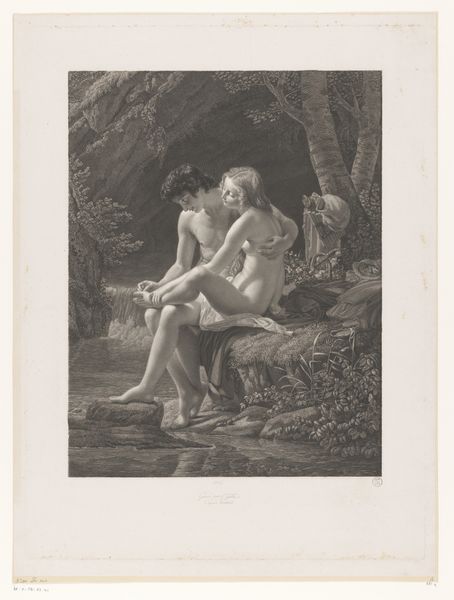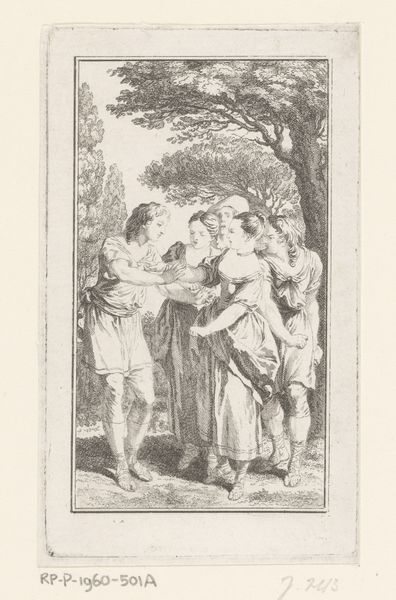
engraving
#
portrait
#
neoclacissism
#
allegory
#
landscape
#
figuration
#
history-painting
#
engraving
Dimensions: height 276 mm, width 191 mm
Copyright: Rijks Museum: Open Domain
François Joseph Etienne Beisson created this print, "Amor leidt een man bij zijn keuze in de liefde," using etching and possibly engraving. It presents a romantic allegory, with Venus offering fruit, symbolic of temptation, to Cupid, who encourages a seated man to choose. Dating from the late 18th or early 19th century, this work reflects Neoclassical ideals popular in France at the time. The focus on idealized human forms, and classical themes suggests a desire to emulate the virtues and aesthetics of ancient Greece and Rome. But it also served to reinforce very contemporary ideas about gendered power relationships. Consider the male figure’s passivity, dependent on Cupid's urging, while Venus is placed as the provider of physical pleasure, rather than an active decision maker. How might these depictions speak to the social norms and expectations of Beisson's time? To fully understand this print, we can delve into the art criticism and social commentaries of 18th and 19th century France, exploring how artists engaged with, or challenged, prevailing social and institutional norms.
Comments
No comments
Be the first to comment and join the conversation on the ultimate creative platform.
